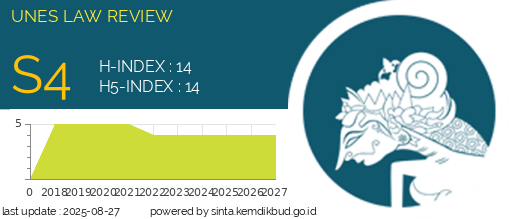Legal Protection For Businesses Against Sustainable Innovation In The Digital Realm
DOI:
https://doi.org/10.31933/unesrev.v6i4.2155Keywords:
Business Actors, Digital Domain, Legal Protection.Abstract
The buying and selling process can now be through non-physical transactions or employing digital media. Physical transactions require buyers and sellers to meet to exchange goods or services directly. However, problems arise when sellers are located outside the area, making it difficult for buyers to access them. Technological advances provide solutions for buyers and sellers who are separated by distance through E-Commerce. E-commerce offers many conveniences in marketing goods or services. Sellers can market their products widely by providing various variants. Marketing via e-commerce does not require a physical store to display products, thereby reducing costs. Meanwhile, buyers can also easily choose the products they want. However, the facts in the buying and selling process via social media generate a risk of loss for consumers and business actors due to the possibility for fraud that could be performed by one of the parties. Losses experienced by business actors are caused by failure to fulfill the achievements that should be carried out by the consumer. It is because numerous people do not understand the principles of security in online transactions, such as verifying the identity of the merchant or customer, security in payment procedures, and other factors that can help deter crime. As a result, criminal cases often occur which cause losses in the digital market, as if cyberspace has no legal rules. The presence of Law Number 19 of 2016 concerning amendments to Law Number 11 of 2008 concerning Information and Electronic Transactions and Law Number 8 of 1999 concerning Consumer Protection is a solution to protect actors who transact in E-Commerce.
Downloads
References
F. E. Christy, “Prediksi Angka Pengguna E-commerce di Indonesia 2024,” Tempo.Co. Accessed: Apr. 25, 2024. [Online]. Available: https://data.tempo.co/data/909/prediksi-angka-pengguna-e-commerce-di-indonesia-2024
D. A. Setyawati, D. Ali, and M. N. Rasyid, “Perlindungan Bagi Hak Konsumen dan Tanggung Jawab Pelaku Usaha Dalam Perjanjian Transaksi Elektronik,” Syiah Kuala Law Journal, vol. 1, no. 3, pp. 46–64, Dec. 2017, doi: 10.24815/sklj.v1i3.9638.
S. HS and E. S. Nurbani, Penerapan Teori Hukum pada Penelitian Tesis dan Disertasi. Jakarta: PT. RajaGrafindo Persada, 2013.
B. Andjani and A. F. Rosando, “TINJAUAN YURIDIS PERLINDUNGAN HUKUM TERHADAP PELAKU USAHA DALAM E-COMMERCE YANG DIRUGIKAN AKIBAT DUGAAN ORDER FIKTIF,” Bureaucracy Journal : Indonesia Journal of Law and Social-Political Governance, vol. 3, no. 1, pp. 697–723, Dec. 2022, doi: 10.53363/bureau.v3i1.211.
R. Brammantyo and I. Rahman, “Legal Protection of E-Commerce Consumers in Online Transactions in Indonesia,” American Journal of Social Sciences and Humanities, vol. 4, no. 2, pp. 358–368, 2019, doi: 10.20448/801.42.358.368.
Law Number 8 of 1999 concerning Consumer Protection.
F. Fitriah, “PERLINDUNGAN HUKUM BAGI KONSUMEN DALAM TRANSAKSI JUAL BELI MELALUI MEDIA SOSIAL,” Solusi, vol. 18, no. 3, pp. 371–382, Sep. 2020, doi: 10.36546/solusi.v18i3.305.
Abd. H. Hamid, Hukum Perlindungan Konsumen Indonesia, Cet. 1. Makassar: CV. Sah Media, 2017.
Downloads
Published
How to Cite
Issue
Section
License
Hak cipta :
Penulis yang mempublikasikan manuskripnya di jurnal ini menyetujui ketentuan berikut:
- Hak cipta pada setiap artikel adalah milik penulis.
- Penulis mengakui bahwa UNES Law Review berhak menjadi yang pertama menerbitkan dengan lisensi Creative Commons Attribution 4.0 International (Attribution 4.0 International CC BY 4.0) .
- Penulis dapat mengirimkan artikel secara terpisah, mengatur distribusi non-eksklusif manuskrip yang telah diterbitkan dalam jurnal ini ke versi lain (misalnya, dikirim ke repositori institusi penulis, publikasi ke dalam buku, dll.), dengan mengakui bahwa manuskrip telah diterbitkan pertama kali di Jurnal UNES Law Review.



















